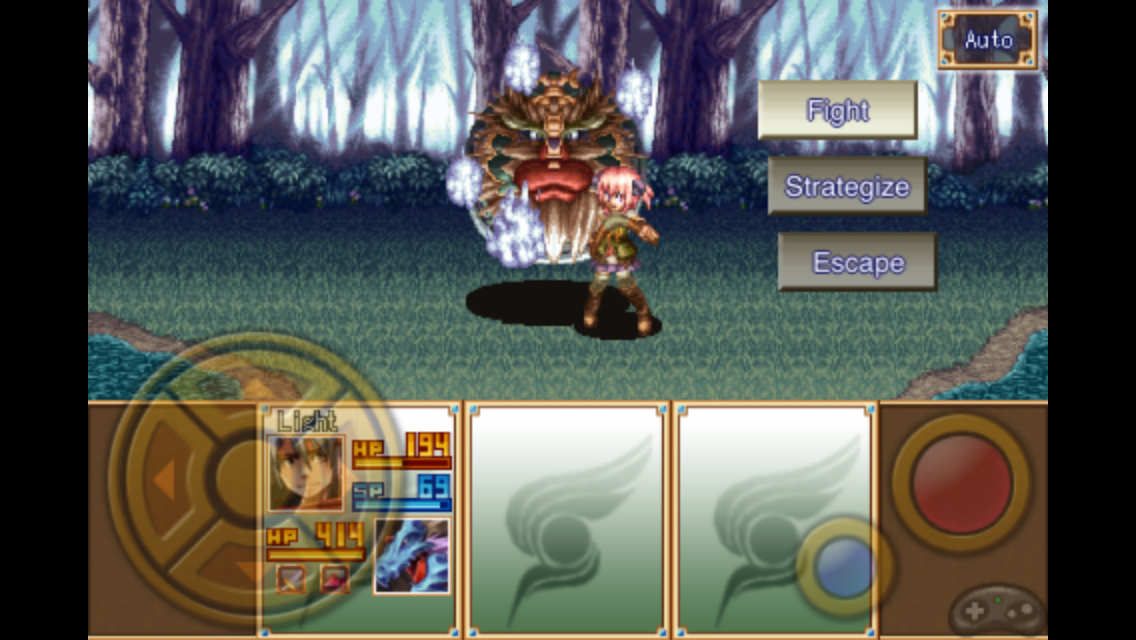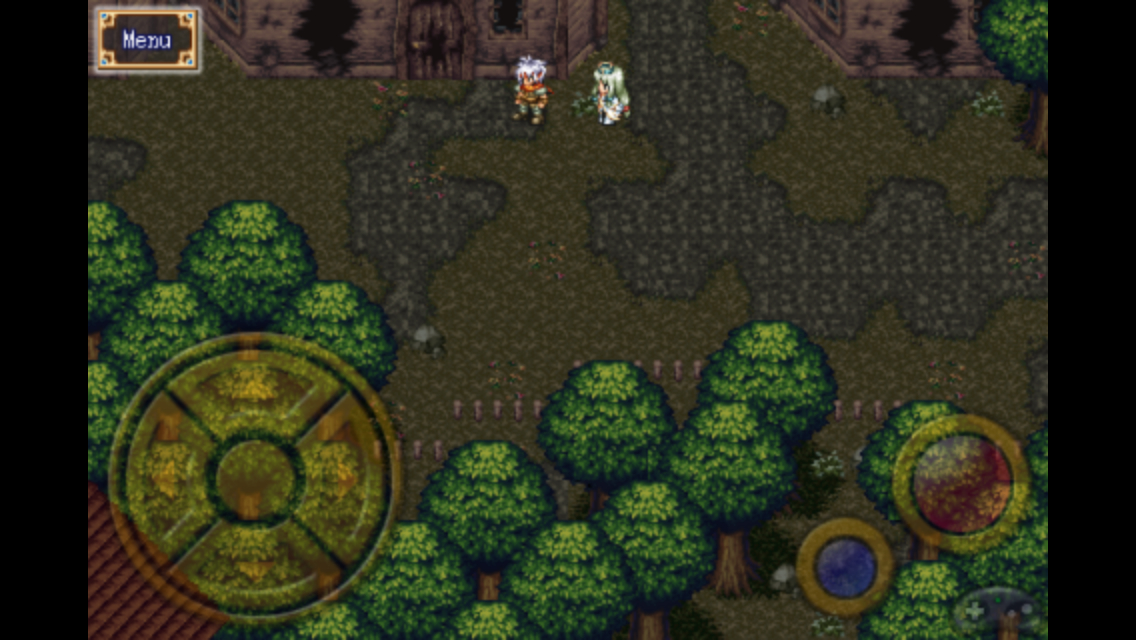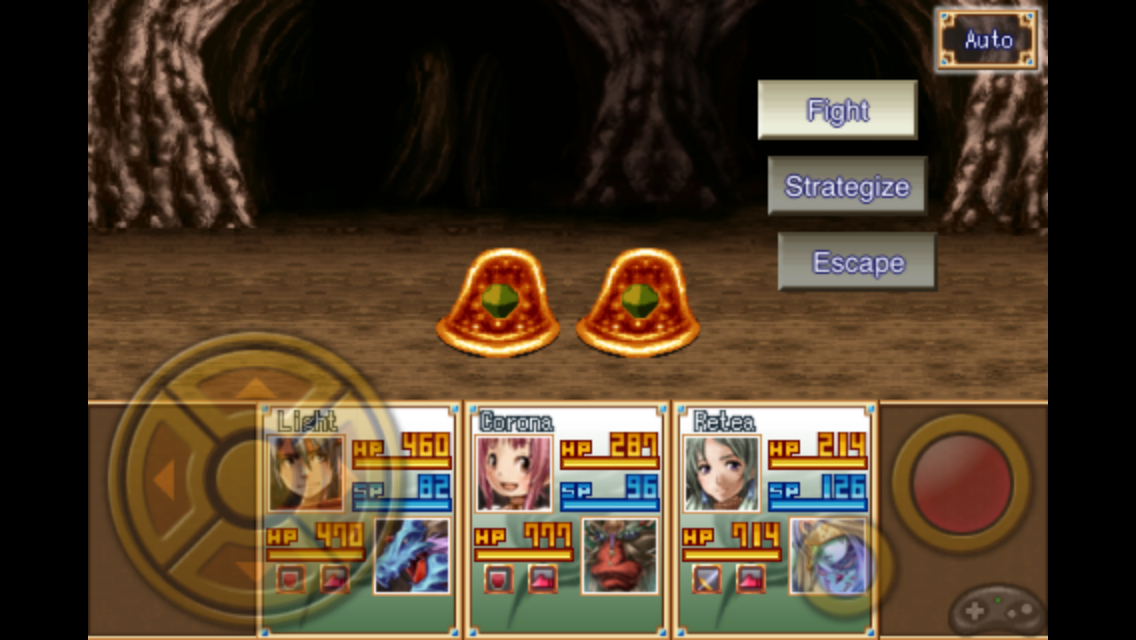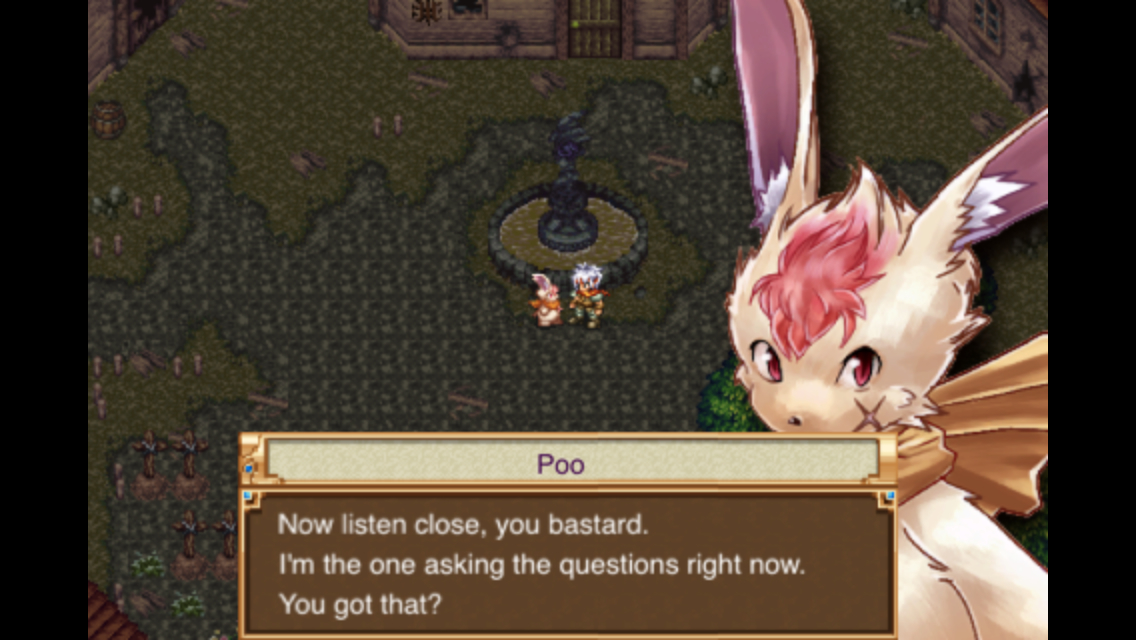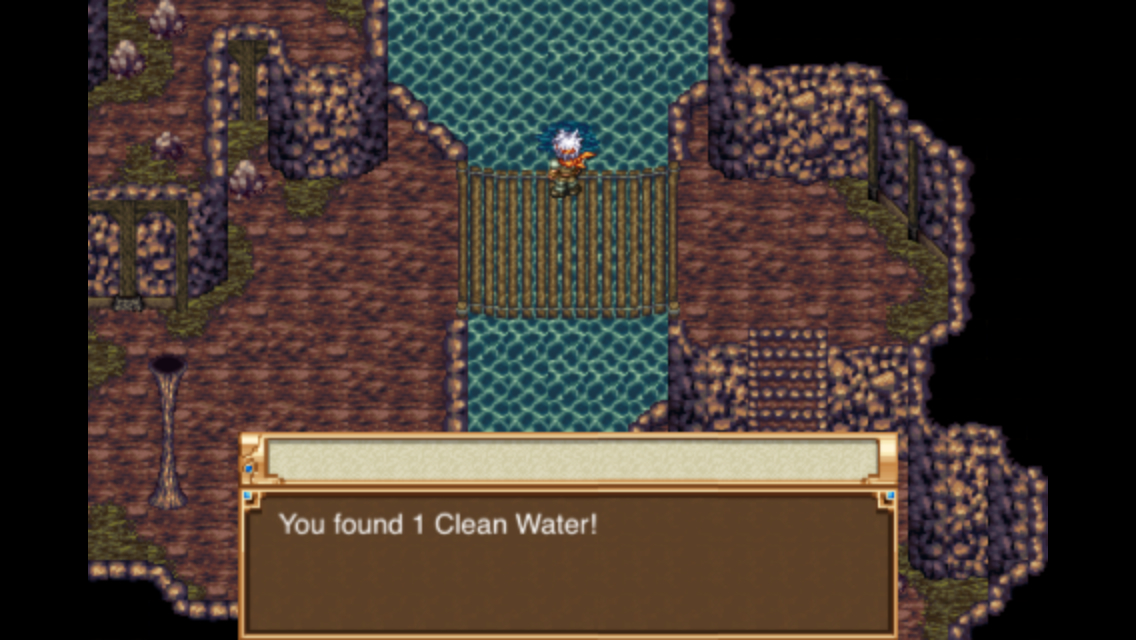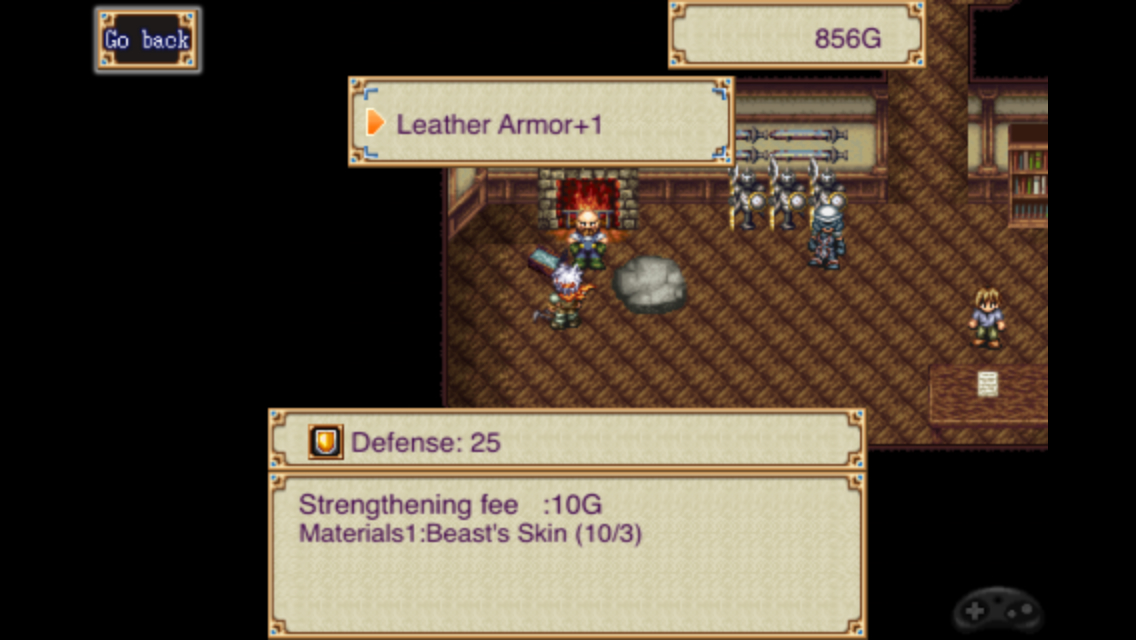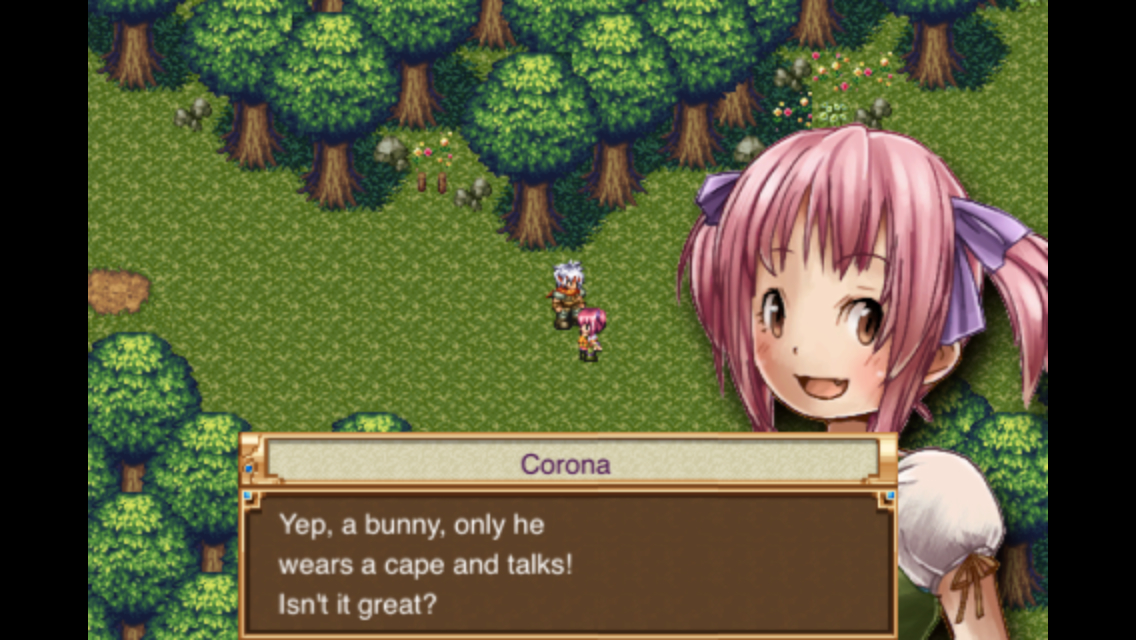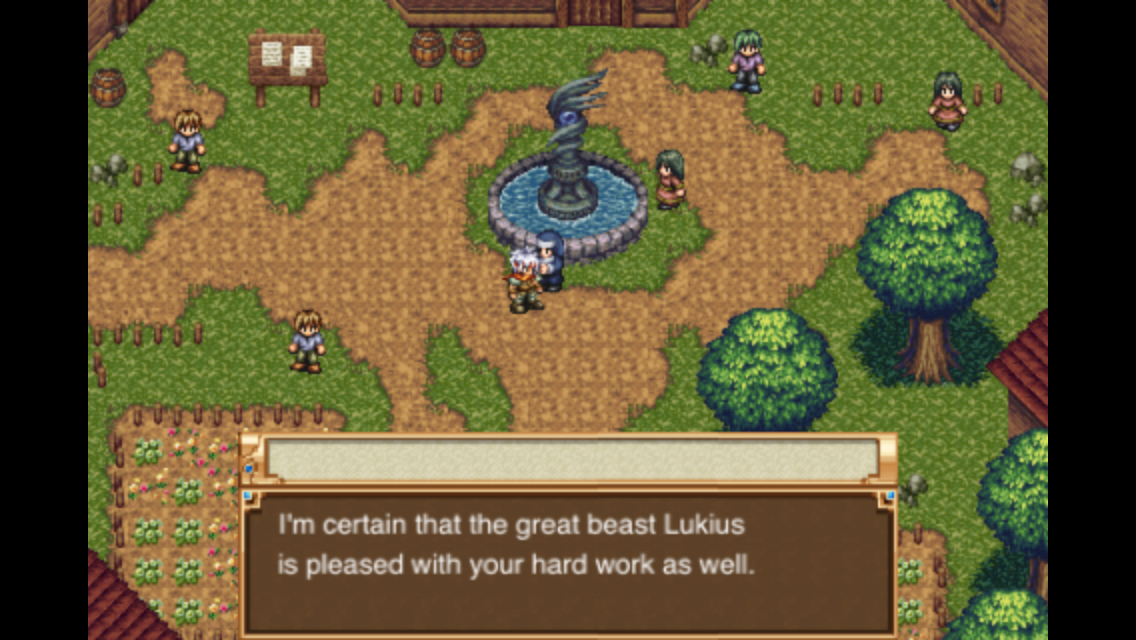 Hello, gentle readers, and welcome to the RPG Reload, the weekly feature where we never trust bunnies. Each week, we take a look at an RPG from the App Store’s past to see how it holds up in the modern day. It’s a bit of reflecting, a bit of revisiting, and sometimes just a nice chance to do a deeper dive than our reviews typically allow. I try to choose a balanced plate of RPGs from week to week in order to demonstrate the diversity of the genre, but if you feel like I’m missing something important, I’m certainly open to suggestions. You can let me know what you’d like to see by commenting below, posting in the Official RPG Reload Club thread, or by tweeting me at @RPGReload. It might take a while to fit your idea into the schedule, but it’ll certainly go on the master list.
Hello, gentle readers, and welcome to the RPG Reload, the weekly feature where we never trust bunnies. Each week, we take a look at an RPG from the App Store’s past to see how it holds up in the modern day. It’s a bit of reflecting, a bit of revisiting, and sometimes just a nice chance to do a deeper dive than our reviews typically allow. I try to choose a balanced plate of RPGs from week to week in order to demonstrate the diversity of the genre, but if you feel like I’m missing something important, I’m certainly open to suggestions. You can let me know what you’d like to see by commenting below, posting in the Official RPG Reload Club thread, or by tweeting me at @RPGReload. It might take a while to fit your idea into the schedule, but it’ll certainly go on the master list.
After just over a year’s worth of weekly articles, I’m finally getting around to what is by leaps and bounds the most prolific RPG publisher on the App Store, possibly even in gaming in general. Kemco has released more than 40 RPGs since the September 2011 debut of the English version of Symphony Of Eternity ($6.99). Today’s featured game, Fantasy Chronicle ($6.99), was Kemco’s fourth English release and the debut of developer Hit-Point outside of Japan. Like all of Kemco’s early iOS releases, it was a port from an earlier feature phone game, and it certainly showed. Nevertheless, among Kemco fans and Kemcologists such as myself, it remains one of the high points in Kemco’s line-up. It’s basically the earliest release from the company that I can still be bothered to play, which is why I’ve selected it as Kemco’s RPG Reload debut.
Regular readers probably know this by now, but Kemco has historically been more of a publisher than a developer. Established in 1984 as a subsidiary of Kotobuki Engineering & Manufacturing Co., Ltd., Kemco (sometimes called Kotobuki Systems or Kotobuki Solution) was another example of just about every Japanese company under the sun trying to get in on the Famicom boom, whether they had any connection to software development or not. Kotobuki Engineering itself is a somewhat small division of Kotobuki Industries, a company founded after World War 2 that primarily deals with steel products such as castings, ship parts, and industrial machinery. It probably seems odd, and it kind of is, but Nintendo’s home console was so big that everybody wanted in on the easy money. What makes Kemco truly strange is that they are still around, which is not something that can be said for most of the game publishing subsidiaries born out of that period.
Kemco’s first release was a Famicom port of Synapse Software’s Commodore 64 action game Dough Boy. It’s a fairly forgettable game, and it never released on the American version of Nintendo’s system. Kemco is instead mostly remembered for two sets of games. In the 8-bit era, their NES ports of ICOM Simulations’s Shadowgate, Deja Vu, and Uninvited graphic adventure games received a fair bit of attention from Nintendo Power, a sort of king-making precursor to being featured on the App Store. After that, they went through a period of awful licensed games based on Looney Tunes, Snoopy, and any other character they could get their hands on, with the best results coming from the frequently-reskinned Crazy Castle. In the 16-bit console era, Kemco published Gremlin Graphics’s Top Gear series of racing games, which were pretty much the most enjoyable home console racing games around at the time.
The company continued releasing quite a few games in the following years, trying at least a few times to revive both Shadowgate and Top Gear, to little success. Most of their output focused on Nintendo’s handheld systems, but they did release the occasional console title, including arguably the singular worst Batman game ever made, Batman: Dark Tomorrow. By the mid-2000s, things were looking pretty dim for Kemco. In what was perhaps a last-ditch effort to keep things going, they largely exited the traditional games market and moved over to mobile phones in 2007. Their first release was a JRPG called Alphadia ($3.99) from EXE-Create, a small developer primarily known at that time for their PC Ys clone, Frane. The game proved a solid hit, prompting Kemco to commission a sequel from EXE-Create and another JRPG project from a new developer named Hit-Point. By the time Kemco moved into the smartphone market in 2010, they already had several popular mobile RPGs under their belt. That’s largely the niche they’ve continued with since, apart from occasional ports to consoles or handhelds.
Hit-Point is a more typical story. Founded in 2007, they almost immediately walked into a situation that kept them secure and relatively successful. Kemco was looking for other feature phone games to publish, and Hit-Point had one that fit the bill nicely. Titled Maiden Of Orleans: The Tale Of Jeanne D’Arc, it was a fairly simple RPG with action-packed battle scenes obviously inspired by Namco’s Tales series. Unlike many other Kemco-published games of this period, it never saw a re-release on smartphones. That was the case for their next few feature games, as well, although one of them, Armed & Golem, did get a smartphone sequel titled Rusted Emeth ($7.99). In late 2009, Hit-Point and Kemco released an RPG called DarkGate ($1.99), followed soon after in early 2010 by Fantasy Chronicle. Both of these would end up among Kemco’s earliest international releases on smartphones. Hit-Point has remained one of Kemco’s hardest-working partners, developing more than 10 RPGs for them over the course of the last five years.
Fantasy Chronicle released in the American App Store in January of 2012 to a generally favorable response from both critics and players. About a year and a half later, in July 2013, the game was ported to Sony’s PSP, sporting a new name, a much larger price tag, and an improved localization. That release didn’t enjoy quite as much enthusiasm, but let’s face it, the PSP’s RPG line-up as of 2013 was pretty amazing. A humble little feature phone port wasn’t going to look good against some of the best JRPG work of that generation, especially at a higher price. That said, I think it’s probably the best version of the game, so if you’ve got the means and don’t mind paying more money, look up Mystic Chronicles on PSN. If nothing else, it avoids being as on-the-nose with the protagonist’s name.
The hero of the game is called Light in the iOS version, and he’s an orphan of mysterious origins whose childhood friend is apparently killed by a dark force when it burns down his small village, and oh gosh my jar of cliches just spilled all over everything. The story in Fantasy Chronicle is loaded up with a whole checklist of tropes, and just about every beat can be seen coming from a mile away. With a better localization, there might be something to work with here. Kemco’s localizations were particularly rough in their early games, and though everything is easy enough to understand, it all reads very awkwardly. Some of the more colorfully-named late-game gear pieces get hilariously inaccurate translations, with my personal favorite being the Loon Grave, a messed up translation of Rune Glaive. It’s important to keep the game’s origins in context. This was something meant to be played on a flip-phone while waiting for the train. The stories in Kemco games would eventually improve, but here it’s just the faintest bit of glue to keep things held together.
That feature-phone philosophy also runs through the gameplay, but the result is far better there. The main story of the game follows a fairly direct line, sending you through a handful of menu-based overworld maps, each with several dungeons and a few towns to explore. The story will take you through each town and dungeon at least once, but you’ll more likely end up making quite a few trips to each zone. In the story, your character joins a group called Holos Over, a sort of guild that hands out quests and rewards for completing them. At any time, you can report to the local guild and pick up a selection of side-quests to work on. This will usually involve going to a particular dungeon and killing a certain number of monsters, gathering a certain number of ingredients, or taking down a super-powerful monster, but there are a few quests that don’t fall into those categories. Finishing quests, checking them off, and collecting new ones is a process that’s probably more fun than the main story itself.
Also enjoyable is the game’s crafting system. Enemies drop all kinds of items, but you can also find certain ingredients at various spots in the dungeons. Eventually, you’ll be able to send helpers that will automatically gather up ingredients from the locations you send them to. You can then use those ingredients to make new gear or modify existing pieces. Each piece of equipment follows a branching path, some of which have a surprising number of forks. If you’re no longer using a piece of equipment, you can even break it down and get some of the components back. The steady flow of materials means you’ll almost always be improving at least one piece of gear after you make your way through a dungeon, giving you a nice feeling of progression to go along with the side-quest system.
The battle system is fairly traditional turn-based fare, but the addition of Guardian Beasts gives it a slightly different flavor. Guardian Beasts, which are certainly not Guardian Forces at all, are special monsters that you can bind to your characters. They’ll join in on battles automatically, and when they take enough damage, they’ll become enraged and start really dropping the boom on enemies. Over time, you’ll develop bonds between characters, leading to coordinated attacks that do greater damage. I should mention that if you want to use any items in battle, you’ll have to ready them for each character beforehand. It’s a somewhat unusual system, though not terribly different from the Dragon Quest games, when you think about it. With all of these elements in play, the battles feel pretty exciting and chaotic, and there’s definitely potential for serious strategy.
You’ll need strategy and more to clear out everything in Fantasy Chronicle. Most of the game is a pushover, but there are some genuinely nasty bosses in this game. I find a lot of earlier Kemco-published mobile RPGs followed this pattern. It’s very easy to walk through the game, but right near the end, everything gets very, very difficult. You’ll probably have to grind at least a little and work out your plan of attack carefully if you want to see the ending. That’s even setting aside all of the fighting you’ll engage in while gathering materials and solving side-quests. It’s not a great game to sit down and try to knock in long sessions because of how simple and repetitive it can be, but taken a little bit at a time, I find it quite enjoyable.
The dungeon designs aren’t too shabby either, using chests and gathering points as rewards for ducking down side passages. It’s fun to track down the special monsters and take them out, and a quick exit button allows you to get out of a dungeon whenever you need to. The lack of a proper overworld and the unusual presentation of the towns certain belie the game’s roots, but they both sort of work for the kind of methodical gameplay Fantasy Chronicle offers. Everything is easily accessible, and even dungeons can be entered from multiple points once you find the appropriate exits. These conveniences help make gathering resources and solving guild quests as painless as possible, even if they do make the game feel like it’s lacking a bit in grandeur.
While the gameplay itself is still fun, the app is certainly showing its age. Its last update was in September of 2012, and it was little more than a bug fix. The visuals are kind of fuzzy and much of the animation is incredibly stilted, it’s not universal, there are black borders on anything bigger than a 3.5-inch screen, and things like MFi controller and iCloud support are certainly not included. Hit-Point was still getting the hang of touch-based controls, and it shows, because both the touch-to-move controls and the virtual buttons are poorly-implemented. I’d say the latter is the way to go, but the lousy directional pad makes me second-guess that at times. Unless something breaks, it’s highly unlikely this game will be updated in the future, and even then, I expect them to do nothing more than fix whatever happens to break.
It’s perhaps not the easiest thing to play all these years later, but there’s a certain pleasing rhythm to Fantasy Chronicle that helps the time pass faster than you might expect. The story is groan-worthy at times, especially when the true nature of your main character’s origins are revealed, but even it has its moments. The character of Poo, in particular, can be a lot of fun. He’s very frank and isn’t afraid to mock everything going on around him with his sharp tongue. With the right localization, he could have been a major stand-out, but even with the current script, he gets a few good shots in here and there. That said, if you get into this game, it’s almost certainly going to be because you enjoy the groove of finishing quests and upgrading gear. It’s a structure Hit-Point would revisit often, layering on more complexity at times and expanding out on its weaker points, but I’m not sure if they ever got it as right as they did in this game.
That’s just my take on Fantasy Chronicle, though. What do you all think? I know Kemco’s got a mixed reputation, and perhaps rightfully so, but there are a few pretty good RPGs in their catalog, and I sincerely think this is one of them. You can let me know your thoughts by commenting below, posting in the Official RPG Reload Club thread, or by tweeting me at @RPGReload. We’re also taking questions for the next episode of the RPG Reload Podcast, so if you’ve got anything you want to know about us or RPGs in general, send that mail to [email protected]. As for me, I’ll be back next week with a slightly more beloved classic from the App Store’s past. Thanks for reading!
